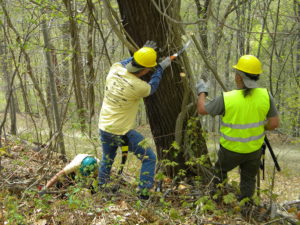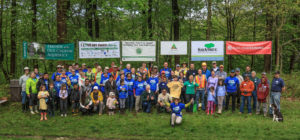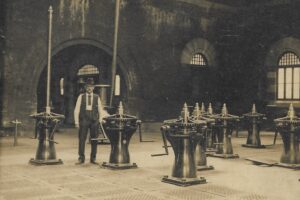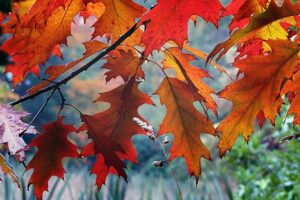
On May 5, 2012, I began a long effort to make a difference on the 26-mile Westchester section of the Old Croton Aqueduct trail, working on managing invasive plants. Since we are now entering a new phase in this endeavor, I invite you to the eighth annual I Love My Park Day on May 4, right on the Aqueduct in Croton-on-Hudson. We plan to restore some native plants in addition to controlling invasive species. You could join our many volunteers (there were 100 last year), and could use the experience to learn how to manage these problem species on your property or as the first step in adopting a section of the trail.
The Westchester leg is a state park rich with history, wonderful for hiking and exploring. As it wends its way through villages and back yards, it provides opportunities to enjoy the stately trees, bushes, and plants along the banks, with occasional river views. But many trees are threatened by invasive vines, depriving them of sunlight and strangling them. Vines also damage historic stone walls and in some places block the view. Other invasives are replacing native plants, disrupting complex ecosystems that have evolved over the millennia in which specific plants host particular insects, which in turn support local birds and other fauna.
To combat this, the Friends of the Old Croton Aqueduct initiated a multiyear project to map the presence and extent of 26 invasive species. We recruited volunteers and State Parks interns and enlisted the NY-NJ Trail Conference to provide technical assistance. The mapping, completed in 2016, revealed significant infestations all along the trail.
Then we had to make difficult decisions. Which species create the most problems? What was possible, what was practical? What was the best way to remove specific plants — and make sure they didn’t grow back? The Friends started a pilot program in the two-and-half-mile northernmost section, from the Croton Dam to Ossining, joining the Lower Hudson Partnership for Regional Management of Invasive Species (lhprism.org) to learn from the experts.

We expanded our efforts by hosting the first I Love My Park Day as part of a statewide initiative sponsored by Parks and Trails NY. I drafted experienced naturalists as crew leaders, purchased tools, and recruited volunteers. That first year 30 showed up, focusing on the tree-strangling bittersweet and porcelain berry vines. I have hosted these events annually, with more participating each year. We gradually expanded our focus to include many other invasives, such as garlic mustard and barberry bushes, that damage native flora by exuding destructive chemicals. Corporate sponsors help with the funding, along with local merchants, and many area environmental organizations help too, lending staff, expertise, and tools. For more information: aqueduct.org/invasive-plant-management.
Although much remains to be done on the stretch from the Croton Dam to Ossining, native plants, ferns, bushes, and trees are now thriving without the competition from those destructive invasive plants that are not growing back because of our efforts.
Can we do this on other sections? Yes, with your help. With the success of our pilot program clear, the time is right. The Friends and I, along with the Hastings Vine Squad, are looking for other energetic and committed trail stewards to adopt a section of the trail for invasive species management. We offer training, tools, and mentoring. First step: come to the May 4 I Love My Park Day on the Old Croton Aqueduct (register here: www.aqueduct.org/events/i-love-my-park-day) or contact me for more information at daldenpc@bestweb.net.






